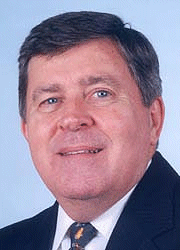 The oil spill in the Gulf of Mexico has now pushed past the three-month mark with little end in sight. Are we prepared should remnants of the spill reach coastal areas of Maryland? The Governor and relevant cabinet members met recently on the Eastern Shore to discuss plans to deal with the potential impact of the oil spill on Maryland. A disaster like the Gulf is a good time to review the types of risks we have in the Chesapeake Bay. Maryland's record of fouling the Chesapeake Bay is not one to be proud of, but that may change.
The oil spill in the Gulf of Mexico has now pushed past the three-month mark with little end in sight. Are we prepared should remnants of the spill reach coastal areas of Maryland? The Governor and relevant cabinet members met recently on the Eastern Shore to discuss plans to deal with the potential impact of the oil spill on Maryland. A disaster like the Gulf is a good time to review the types of risks we have in the Chesapeake Bay. Maryland's record of fouling the Chesapeake Bay is not one to be proud of, but that may change.
For over two decades, the health of the Chesapeake Bay has been the victim of promises broken, unmet goals to reduce pollution and well meaning but weak multistate efforts to save the Bay. Chesapeake Bay and its 64,000 square mile watershed have made modest improvements at best. However, after spending $6 billion over 25 years in attempts to restore the Bay, it still has just as many heavily polluted dead zones as it did 25 years ago. Nevertheless, during that time, EPA officials conceded that they presented rosy progress reports, fearing that truthful progress reports would jeopardize annual funding of $20 million.
According to the annual report, produced by the Chesapeake Bay Program stated that only 45% of the goals were met in 2009. While gains were made in water clarity, underwater bay grasses, bottom dwelling species and blue crabs; pollution from storm water runoff from urban and suburban areas is increasing the fastest. As more people move into the watershed, their activities offset many of the gains. In the 1970s, 11.8 million people lived in the watershed. Today, 17 million live there.
Last year, there was a dramatic change to the ongoing effort to clean up the Bay. On May 13, 2009, the President signed an executive order committing the federal government to develop a Bay restoration strategy. The Environment Protection Agency (EPA), operating under the Clean Water Act, would have the power to enforce clean up goals. For the first time, we have a federal commitment to act as environmental enforcers of more stringent standards and penalize the states that fail to meet them.
In addition, in May 2010, a settlement was reached to end a lawsuit brought by the Chesapeake Bay Foundation against federal regulators for not sufficiently enforcing Clean Water Act standards. The settlement legally binds the EPA to achieve the goals established in the settlement. Jon A. Mueller, a lawyer for the Chesapeake Bay Foundation, said, "For the first time in Bay history, the EPA has said in a legally enforceable document." "We (the EPA) are responsible for Bay restoration." Mueller said that advocates would return to court if the EPA misses targets.
The settlement has significant consequences for the Bay's watershed, land that reaches from upstate New York to the Shenandoah Valley. I am optimistic that this landmark strategy will stand the test of time and that the EPA will fulfill its legal obligations.
The settlement has significant consequences for the Bay's watershed, which encompasses land that stretches from upstate New York to the Shenandoah Valley. Under the agreement, the EPA will mandate that states limit their nitrogen, phosphorus and sediment flow into the Bay in compliance with an overall daily maximum being formulated by the agency. The EPA has also agreed to formulate regulations to control barnyard pollution. Each of the six states involved and the District of Columbia will have to develop a plan to comply with the limits set. States violating these limits can be denied federal funds or construction permits for major developments.
I know that promises like those contained in the settlement have been heard again and again. And again and again, the promises were not fulfilled. We have had tough and fair pollution controls with reasonable deadlines for meeting them before. And Chesapeake restoration remained an elusive goal and an impossible dream. So while our record for the Clean-up of the Chesapeake Bay is less than optimistic, let's hope we are more prepared to react to remnants of the Gulf spill should that ever reach our shores.


